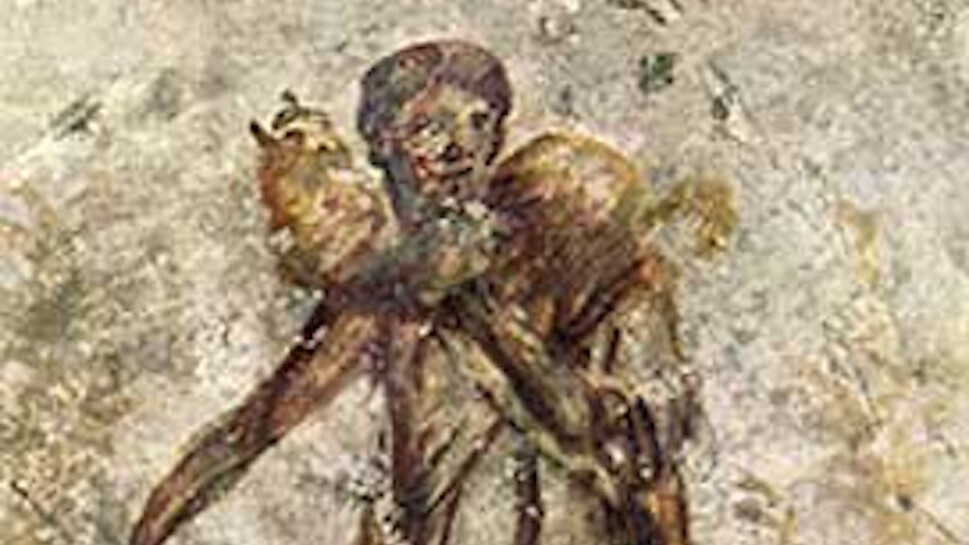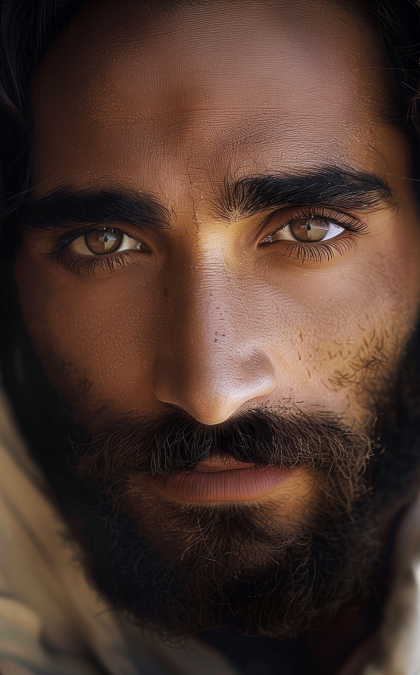The most famous paintings of Jesus
Jesus is depicted throughout history in paintings and statues. There are many stories to tell about Jesus, and it’s interesting how all these different artists translate a story into art.
It’s no surprise that Jesus is an important theme in art history. Art was very expensive, so only the important themes were immortalized on the canvas and in statues. So religious art makes a huge part of art history. Here are some of the most important pieces of art, depicting Jesus.
Do you want to discover more about Jesus in an every day email? Subscribe now and receive an email each morning about Jesus and the message of God.

Oldest painting
The oldest known portrait of Jesus, found in Syria and dated to about 235, shows him as a beardless young man of authoritative and dignified bearing. He is depicted dressed in the style of a young philosopher, with close-cropped hair and wearing a tunic and pallium – signs of good breeding in Greco-Roman society.
Later you see the depiction of Jesus with a full beard. Many of the very old paintings come from Catacombs where Christians gathered for worship, often in secret.
Head of Christ by Rembrandt van Rijn
Nobody knows what Jesus looked like. So, often people imagined Jesus based on what they knew. A famous example is the series of portraits made by the Dutch artist Rembrandt (and probably other artists from his circle). He painted a few versions with the Head of Christ, based on a Jewish model. There are at least three different versions of the same painting.


The Transfiguration by Raphael
The Transfiguration is the great artist Raphael’s last work of art. Raphael has been praised as one of the greatest artists who ever lived. The Transfiguration is an incredibly detailed and profound painting that depicts Jesus Christ rising at Mount Tabor, joined by Moses and Elijah. Within the same painting, the Apostles are seen to be attempting to heal a sick child, which is only possible through the presence of Jesus Christ.
This painting has deep meaning and resonance, and artistically is a tour de force of skill and passion. The painting, which was present beside Raphael’s bed at death, represents the complete culmination of the master’s skill and technique.
The last supper by Da Vinci
The most famous painting of Jesus Christ is, no surprise: The Last Supper by Leonardo da Vinci. In The Last Supper, Leonardo da Vinci tried to capture Jesus Christ dining for the final time with his apostles before he was betrayed by Judas and arrested by the Romans. The Last Supper was painted as a fresco and, like most of Leonardo’s work, contains many hidden aspects.
Read more about the background and story of The Last Supper.


Christ Pantocrator
The way Christ is often depicted in Eastern orthodox iconography is Christ Pantocrator. The icon style is always very flat and stayed basically the same for at least the last 10 centuries. Christ Pantocrator underlines his friendly character and at the same time the all-powerful judge of humanity.
The version of the St. Catherine’s Monastery at Sinai is one of the oldest known icons. It comes from the 6th century AD and is seen to be one of the most important pieces of religious art of Byzantium and the Eastern Orthodox Christianity.
Ognissanti Madonna by Giotto
Jesus is often depicted as a baby with his mother Mary, the mother of God. Ognissanti Madonna, also known as Madonna Enthroned, is a painting by the Italian painter Giotto di Bondone and shows the Virgin Mary and the Christ Child on her lap. Angels and saints are surrounding the seat, which looks like a throne.


Christ of Saint John on the Cross by Salvador Dali
Probably you know Salvador Dali from the famous cathedral in Barcelona, the Sagrada Familia. He’s also the artist who painted Jesus on the Cross. He chose a remarkable perspective where Jesus is floating between heaven and earth. There’s black darkness behind his back. Dali wanted to underline not the importance of the cross in itself, but the man hanging on the cross. The artist claimed the painting appeared to him. It's also inspired by the Crucifixion sketch by St. John of the Cross (ca. 1550)
The Yellow and the Green Christ
Artist Paul Gauguin painted in 1889 a very colorful depiction of Jesus on the cross, The Yellow Christ. It’s an extraordinary work, together with his painting The Green Christ that he painted in the same year. It was painted in a time when realism was more and more abandoned and more creative interpretations came to be.







